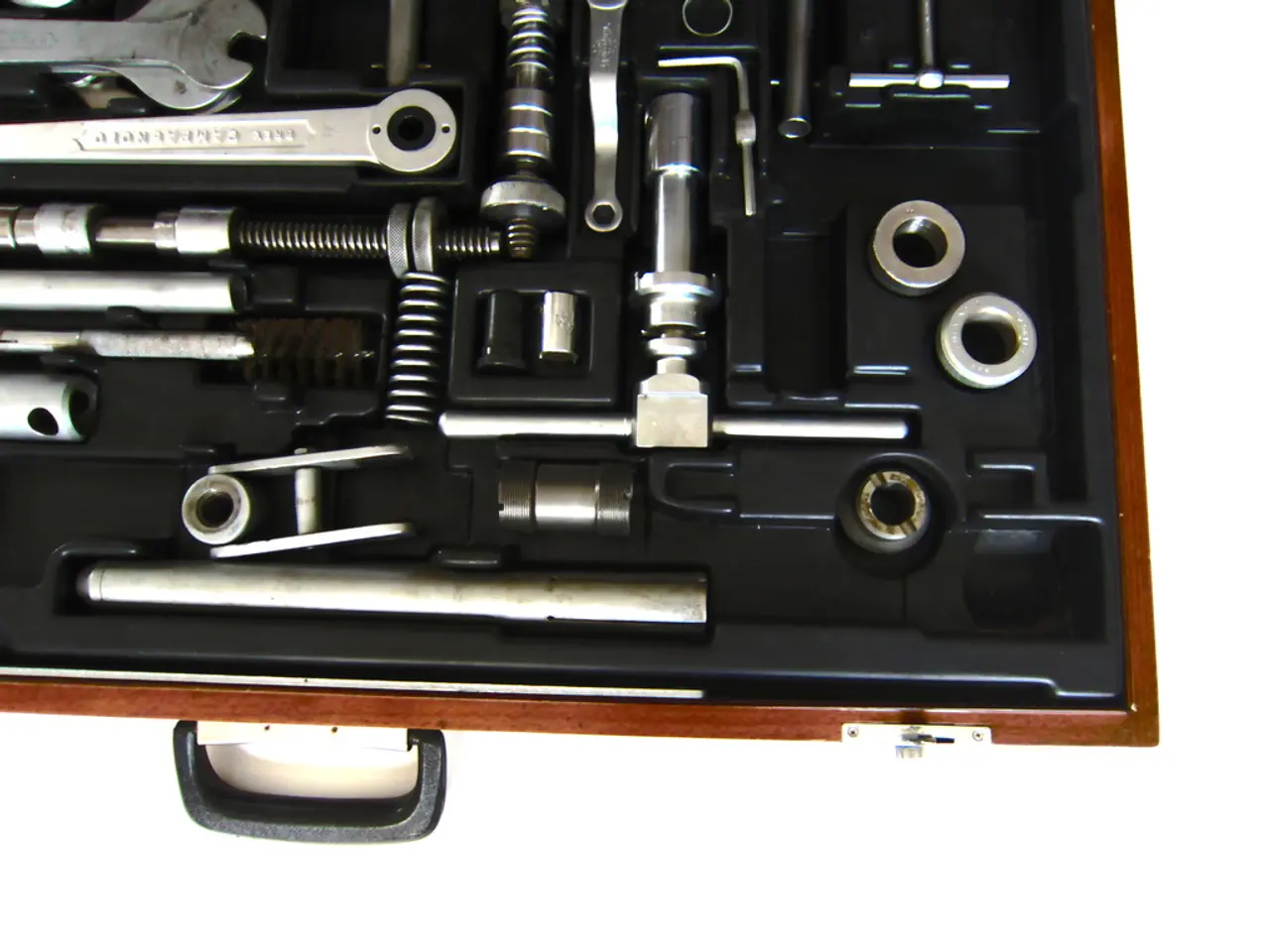Guide on Sculpting Forms in Adobe Illustrator and Top Competitor Software Choices
In the realm of digital design, two powerful tools stand out for their ability to create, edit, and manipulate shapes: Adobe Illustrator and Curve. Let's delve into the features of each tool, focusing on the Pathfinder and Shape Builder functions.
Adobe Illustrator: The Pathfinder Tool
The Pathfinder tool in Adobe Illustrator offers one-click shape operations like unite, subtract (cut out), intersect, and exclude. To cut out shapes using the Pathfinder tool, follow these steps:
- Select the shapes you want to work with using the Selection Tool (V).
- Open the Pathfinder panel by going to Window > Pathfinder.
- In the Pathfinder panel, under Shape Modes, choose the appropriate operation. For cutting out one shape from another, use Minus Front (cuts the top shape out of the shape behind it).
- Click the Minus Front button to subtract the top shape from the bottom one, effectively cutting out the shape.
- If needed, you can use other Pathfinder options such as Divide to split overlapping shapes into parts, or Trim to remove hidden parts.
- After applying Pathfinder operations, you may want to click Expand in the top menu to finalize and edit individual shapes.
Adobe Illustrator: The Image Trace Panel
Adobe Illustrator's Image Trace panel provides a Preview option to view the image as it's being transformed into a vector format. Users can choose Abutting or Overlapping paths, set the Stroke weight if Create Strokes is checked, and adjust the Colors, Grays, or Threshold to fine-tune the traced image.
Curve: The Shape Builder Tool
On Curve's platform, the Shape Builder tool allows for more interactive shape editing by letting users manually drag or click on specific shape portions or overlapping areas to combine or subtract parts precisely. This provides greater control for building or cutting complex shapes visually.
Comparison of Pathfinder and Shape Builder Tools
| Feature | Pathfinder Tool (Illustrator) | Shape Builder Tool (Illustrator / Curve website) | |----------------------------|-------------------------------------------------------|------------------------------------------------------------| | Operation style | One-click panel operations on full shapes | Interactive, manual control over shape parts | | Cutting out shapes | Use Minus Front or Divide modes | Drag or click to subtract or merge specific sections | | Flexibility | Less fine control; all or nothing | More precise; user decides exactly which parts to merge/cut | | Complexity handling | Good for simple quick shape unions/subtractions | Better for complex shapes and custom editing |
Additional Features
- Curve offers AI-powered features like Auto Trace and Background Removal.
- Curve's tracing options allow adjusting the complexity and contrast settings to get the perfect level of detail in a digital artwork.
- Curve's Shape Tool allows drawing pre-made geometric shapes, such as polygons, circles, rectangles, stars, and spirals.
- The Pathfinder panel in Adobe Illustrator is a group of tools used for cutting out shapes.
- In Adobe Illustrator, the Image Trace tool can be accessed by selecting "Window > Image Trace".
- Adobe Illustrator's Image Trace panel allows users to choose whether to create Fills, Strokes, or both in Black and White Mode.
- Curve's Auto Trace button turns raster graphics into high-resolution images within seconds.
- Curve's Pro subscription is priced noticeably lower than Adobe's, making it a great free alternative to Adobe Illustrator.
With these insights, you're now equipped to make informed decisions when working with shapes in Adobe Illustrator and Curve. Whether you prefer the quick and efficient Pathfinder tool or the more hands-on Shape Builder, both tools offer a wealth of possibilities for your digital design projects.
[1] Adobe Illustrator Pathfinder Tool Guide [2] Curve Shape Builder Tool Guide [3] Ben Barnhart, Content Lead for Curve [4] Adobe Illustrator Image Trace Panel Guide [5] Curve Tracing Options Guide
- Adobe Illustrator's Pathfinder tool simplifies shape manipulation by providing one-click shape operations like unite, subtract, intersect, and exclude for cutting out shapes, whereas the Shape Builder tool in Curve offers more interactive shape editing through manual control over specific parts.
- In Adobe Illustrator, to cut out shapes with the Pathfinder tool, users first select the shapes, open the Pathfinder panel, choose the appropriate operation, and click the corresponding button.
- Curve's Shape Builder tool, on the other hand, allows users to drag or click on specific shape portions or overlapping areas for a more precise control over combining or subtracting parts.
- Adobe Illustrator's Image Trace panel offers an Abutting or Overlapping path option for traced images, while Curve's Auto Trace feature transforms raster graphics into high-resolution images in seconds.
- The Pathfinder panel in Adobe Illustrator is a collection of tools used for cutting out shapes, and it can be accessed by selecting "Window > Pathfinder".
- In addition to these tools, Curve offers resources such as AI-powered Auto Trace and Background Removal features, as well as a lower-priced Pro subscription that functions as a free alternative to Adobe Illustrator.
- Beyond the Pathfinder and Image Trace tools, users can also find tutorials on vector graphics, animation, and illustration techniques within the communities of both Adobe Illustrator and Curve to further refine their design skills.




